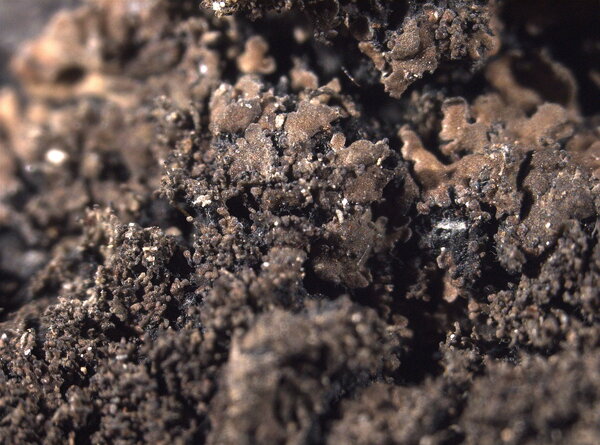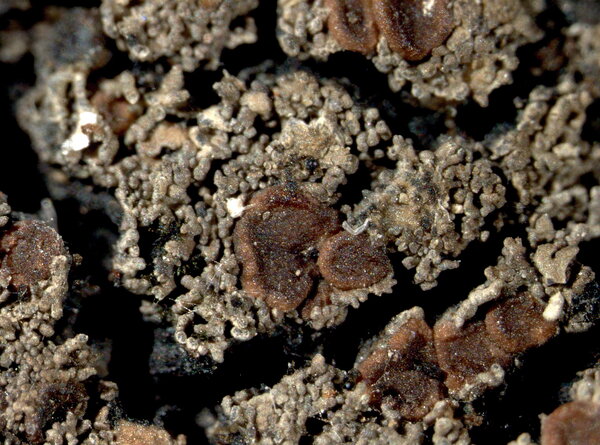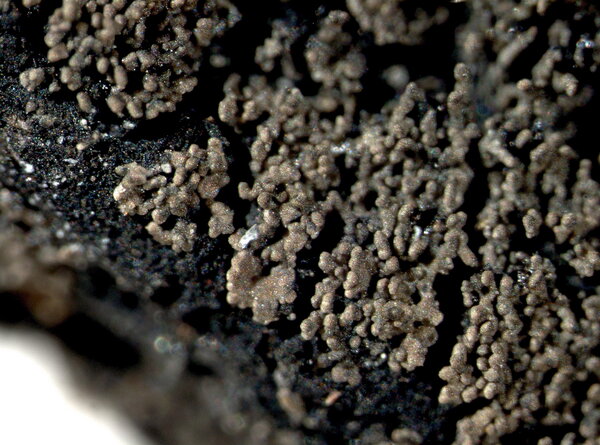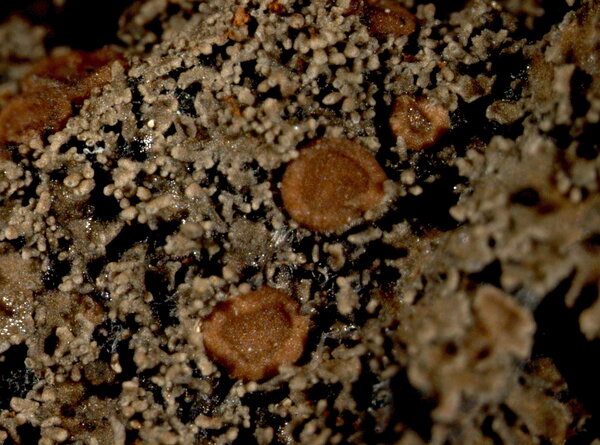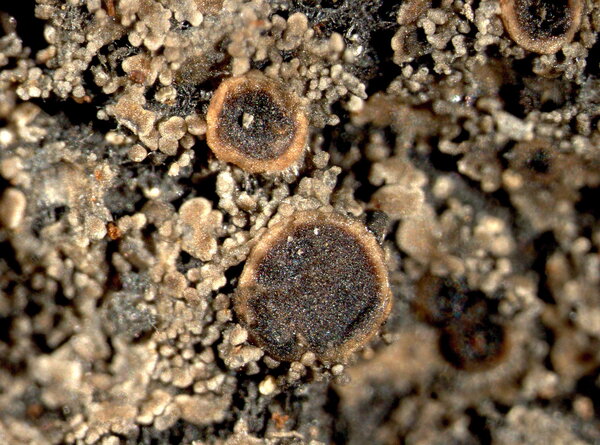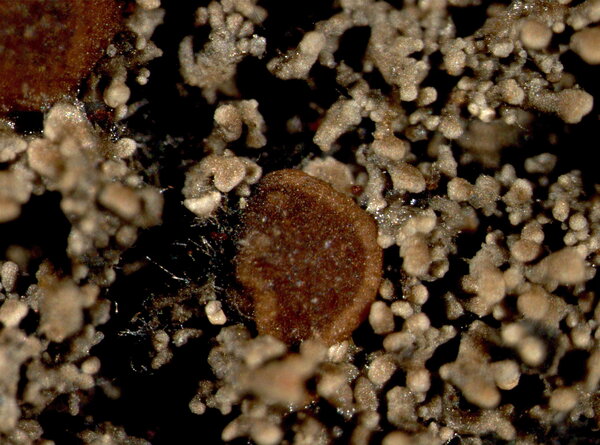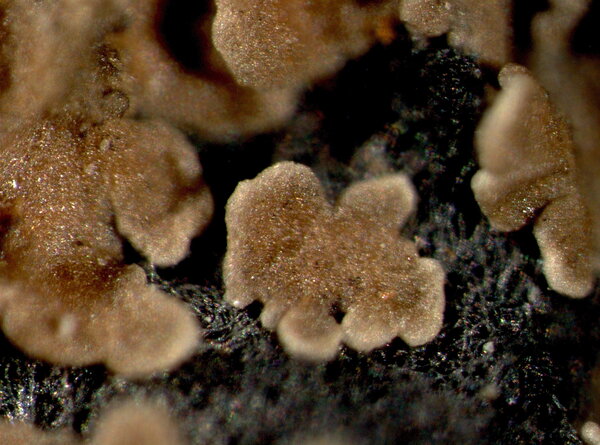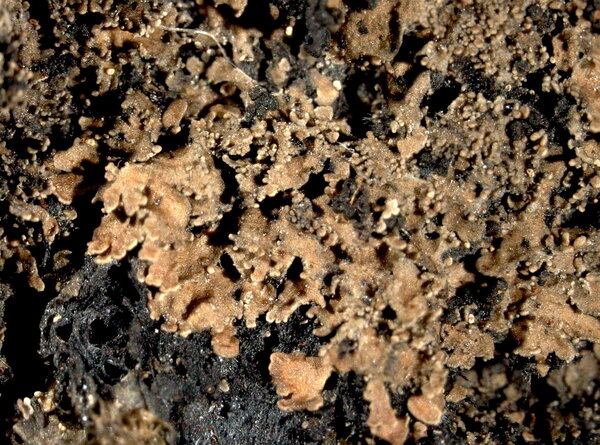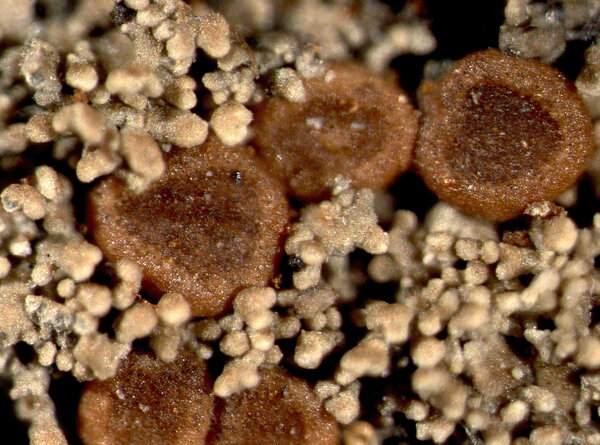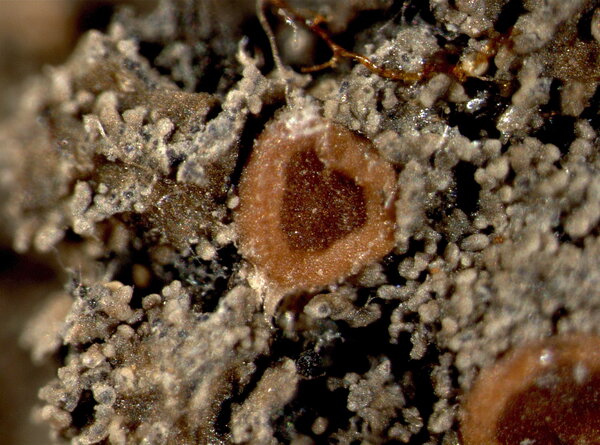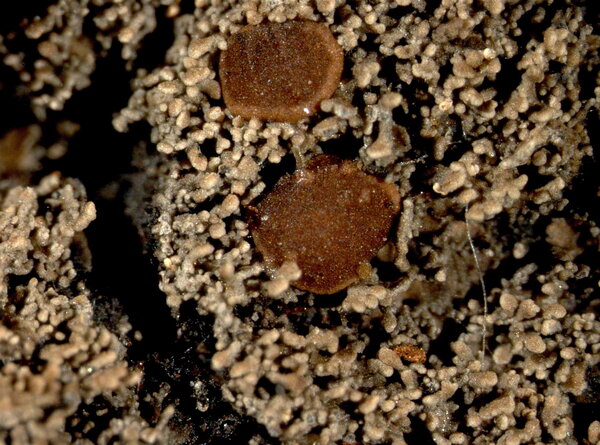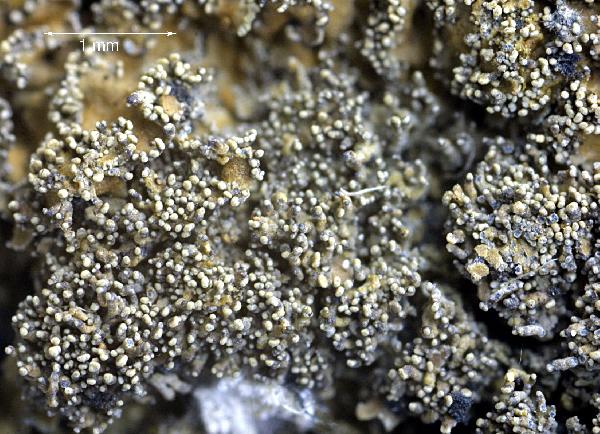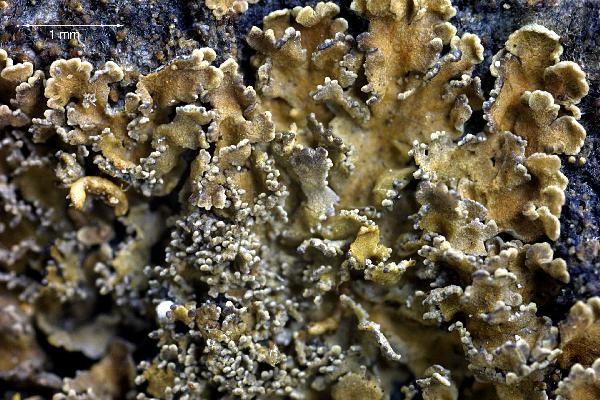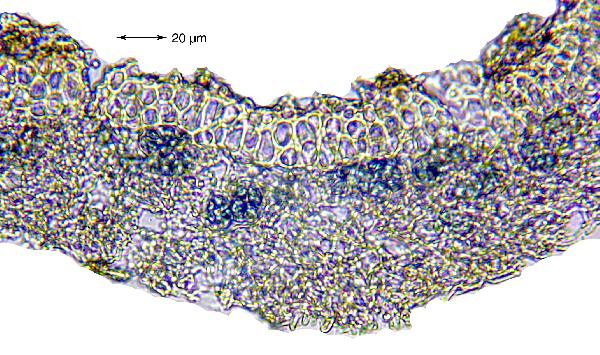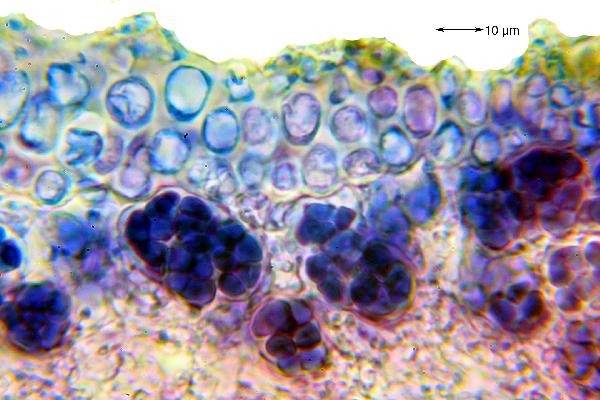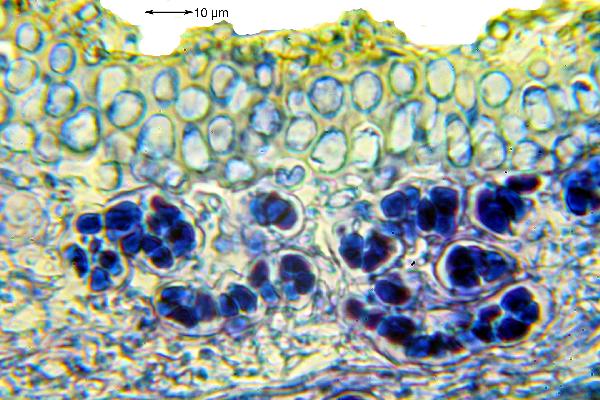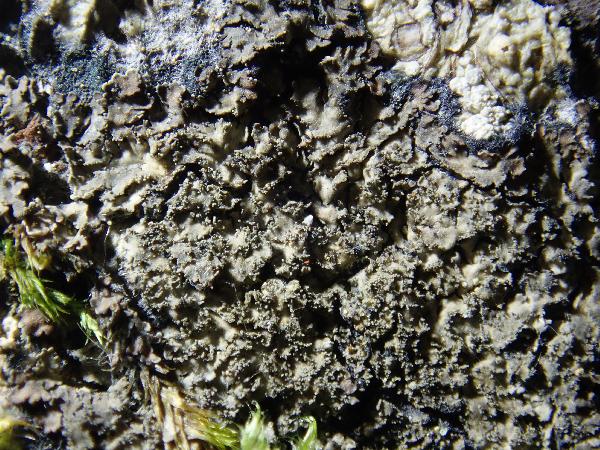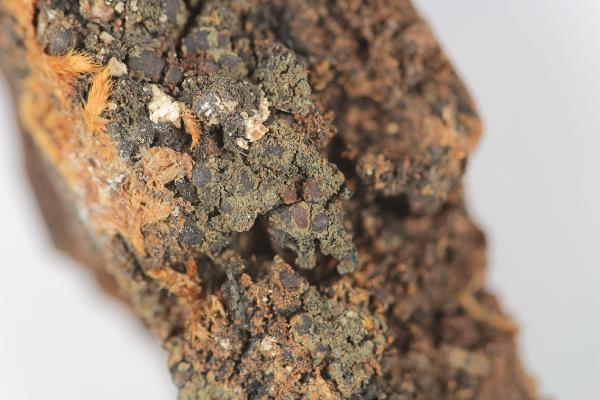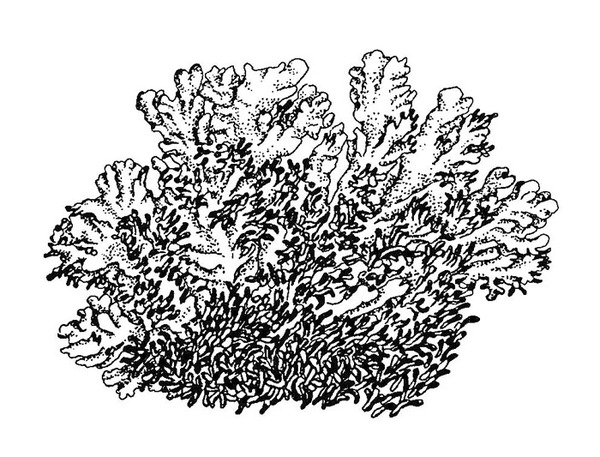Parmeliella triptophylla (Ach.) Müll. Arg.
Mém. Soc. Phys. Hist. Nat. Genève, 16: 376, 1862. Basionym: Lecidea triptophylla Ach. - K. Vetensk.-Akad. Nya Handl., 29: 272, 1808.
Synonyms: Lecanora triptophylla (Ach.) Link; Lecidea microphylla var. corallinoides sensu Ach.; Lecidea microphylla var. schraderi Schaer.; Pannaria lasiella Stirt.; Pannaria triptophylla (Ach.) A. Massal.; Pannaria triptophylla f. incrassata Nyl.; Pannaria triptophylla f. xamia A. Massal.; Parmeliella corallinoides auct. non (Hoffm.) Zahlbr.; Parmeliella corallinoides var. nigrocarpa Gyeln.; Parmeliella corallinoides var. pulvinata H. Magn.; Trachyderma triptophyllum var. oryctogenum Anzi
Distribution: N - VG, Frl (Tretiach 1996, Nascimbene & al. 1998, Tretiach & Hafellner 2000), Ven (Lazzarin 2000b, Nascimbene & al. 2005b, 2006c, 2007, Nascimbene 2008c), TAA (Caniglia & al. 2002, Nascimbene & al. 2006e, 2007b, 2022), Lomb, Piem (Isocrono & al. 2004), VA (Piervittori & Isocrono 1999), Emil (Brackel 2015, Fariselli & al. 2020), Lig (Brunialti & al. 1999, Giordani & Brunialti 2000, Giordani & al. 2002, 2025, Brunialti & Giordani 2003). C - Tosc (Tretiach & Nimis 1994, Benesperi & al. 2007, Benesperi 2011, Brackel 2015, Frati & Brunialti 2023), Marc (Nimis & Tretiach 1999), Umb (Ravera 1998, Ravera & al. 2006), Laz (Ravera 2001, Massari & Ravera 2002, Brackel 2015), Abr (Corona & al. 2016, Gheza & al. 2021), Mol (Paoli & al. 2015), Sar. S - Camp (Nimis & Tretiach 2004, Garofalo & al. 2010, Catalano & al. 2016), Pugl, Bas (Potenza & al. 2014), Cal (Puntillo 1996).
Description: Thallus small-squamulose, heteromerous, 75-100 μm thick, developing on an extended, thin but prominent, blackish hypothallus, the squamules scattered to contiguous, 0.5-1(-1.5) mm wide, incised, blue-grey to brown, more or less shiny, with coralloid marginal isidia (often interspersed with flattened lobules) which may later cover the entire surface. Upper cortex paraplectenchymatous, 25-35 μm thick; medulla white; lower cortex absent. Apothecia rather rare, biatorine, 0.5-1.2 mm across, with a red-brown to blackish, finally convex disc, and a thin, finally often excluded proper margin. Proper exciple paraplectenchymatous, up to 90 µm wide laterally; epithecium brown-black; hymenium colourless, up to 100 µm high, I+ persistently deep blue; paraphyses simple, not or slightly thickened at apices; hypothecium brownish. Asci 8-spored, subcylindrical to clavate, with a I+ blue tholus and an internal, more intensely I+ blue tubular structure. Ascospores 1-celled, hyaline, ellipsoid, 10-17 x 5-8 µm, without an epispore, the inner wall smooth, the outer one uneven. Photobiont cyanobacterial (Nostoc, the cells in clusters). Spot tests: cortex and medulla K-, C-, KC-, P-, UV-. Chemistry: without lichen substances.Note: a widespread, cool-temperate to boreal-montane lichen found on old trees and upon epiphytic bryophytes in humid forests, sometimes also on mossy siliceous rocks, with a wide altitudinal range. It is included in the Italian red list of epiphytic lichens as “Near-threatened” (Nascimbene & al. 2013c).
Growth form: Crustose
Substrata: bark and rocks
Photobiont: cyanobacteria, filamentous (e.g. Nostoc, Scytonema)
Reproductive strategy: mainly asexual, by isidia, or isidia-like structures (e.g. schizidia)
Most common in areas with a humid-warm climate (e.g. most of Tyrrenian Italy)
Commonnes-rarity: (info)
Alpine belt: extremely rare
Subalpine belt: very rare
Oromediterranean belt: absent
Montane belt: very rare
Submediterranean belt: extremely rare
Padanian area: absent
Humid submediterranean belt: very rare
Humid mediterranean belt: extremely rare
Dry mediterranean belt: absent
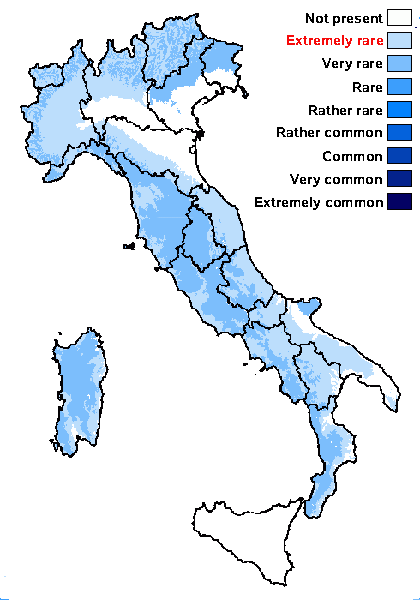
Predictive model
Herbarium samples
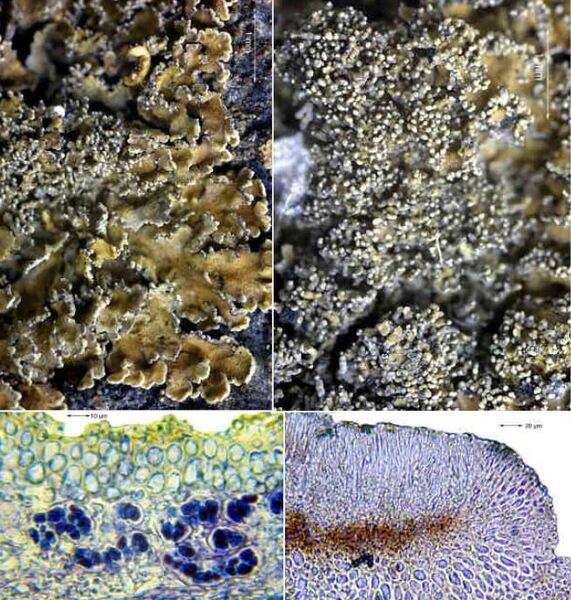

Felix Schumm – CC BY-SA 4.0
Image from: F. Schumm (2008) - Flechten Madeiras, der Kanaren und Azoren. Beck, OHG - ISBN: 978-3-00-023700-3
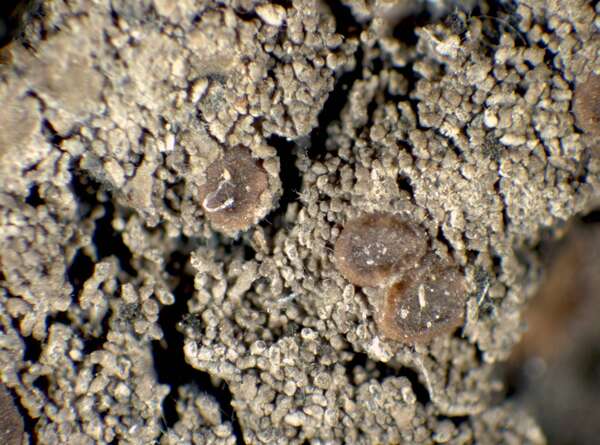

P.L. Nimis; Owner: Department of Life Sciences, University of Trieste
Herbarium: TSB (9116)
2001/12/13
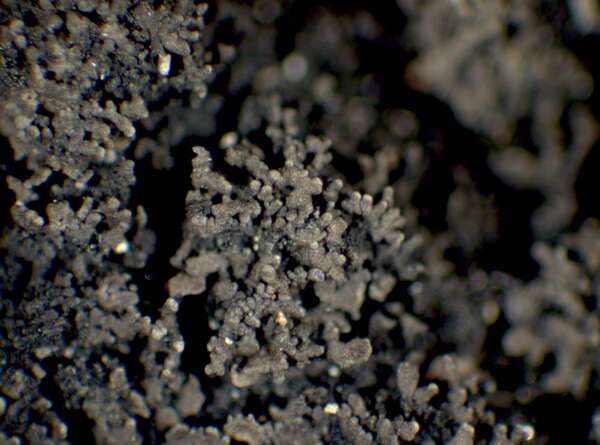

P.L. Nimis; Owner: Department of Life Sciences, University of Trieste
Herbarium: TSB (16053)
2001/12/13
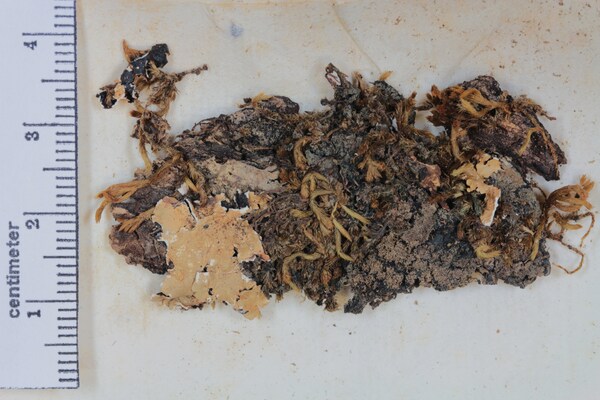
Photo by Maria Zardini, Museo di Storia Naturale di Venezia CC BY-SA 4.0
Ad cort. Castanearum in collibus circa Farra in prov. Vicetina.
Trevisan Lichenotheca Veneta 99 as Trachyderma triptophyllum
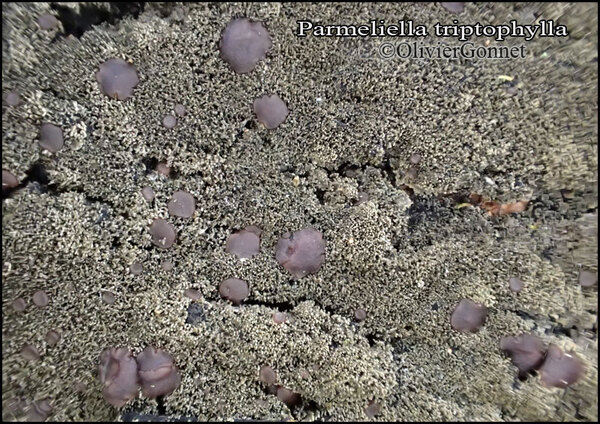
Courtesy Danièle et Olivier Gonnet - Source: https://www.afl-lichenologie.fr/Photos_AFL/Photos_AFL_P/Text_P_3/Parmeliella_triptophylla.htm
France, 20/9/2015 - Bois barbu - Villard-de-Lans - Isère
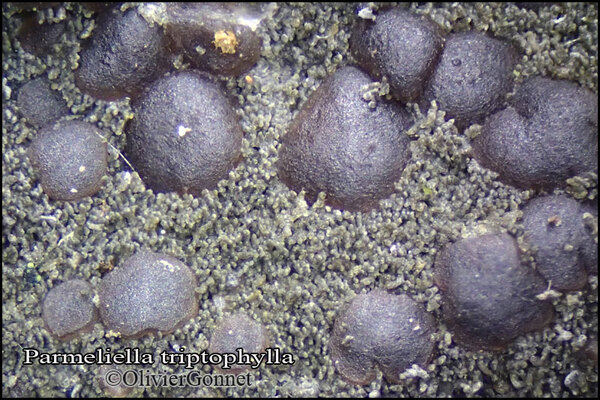
Courtesy Danièle et Olivier Gonnet - Source: https://www.afl-lichenologie.fr/Photos_AFL/Photos_AFL_P/Text_P_3/Parmeliella_triptophylla.htm
France, 20/9/2015 - Bois barbu - Villard-de-Lans - Isère
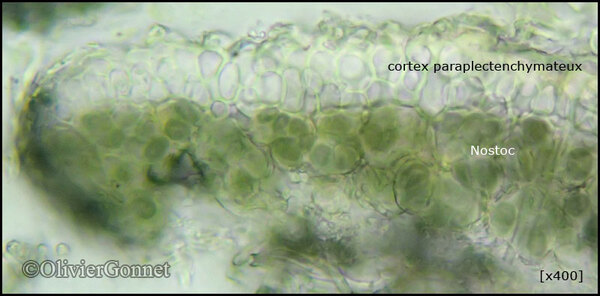
Courtesy Danièle et Olivier Gonnet - Source: https://www.afl-lichenologie.fr/Photos_AFL/Photos_AFL_P/Text_P_3/Parmeliella_triptophylla.htm
France, 20/9/2015 - Bois barbu - Villard-de-Lans - Isère
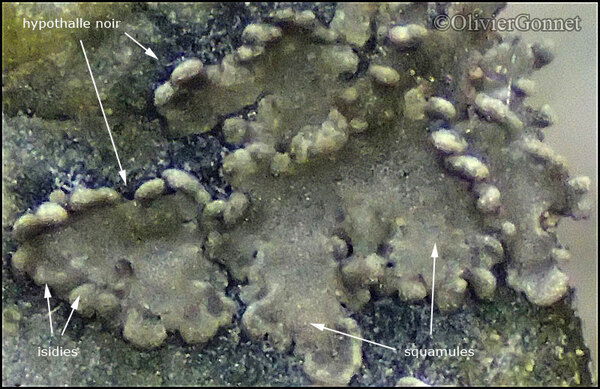
Courtesy Danièle et Olivier Gonnet - Source: https://www.afl-lichenologie.fr/Photos_AFL/Photos_AFL_P/Text_P_3/Parmeliella_triptophylla.htm
France, 20/9/2015 - Bois barbu - Villard-de-Lans - Isère

Courtesy Danièle et Olivier Gonnet - Source: https://www.afl-lichenologie.fr/Photos_AFL/Photos_AFL_P/Text_P_3/Parmeliella_triptophylla.htm
France, 20/9/2015 - Bois barbu - Villard-de-Lans - Isère
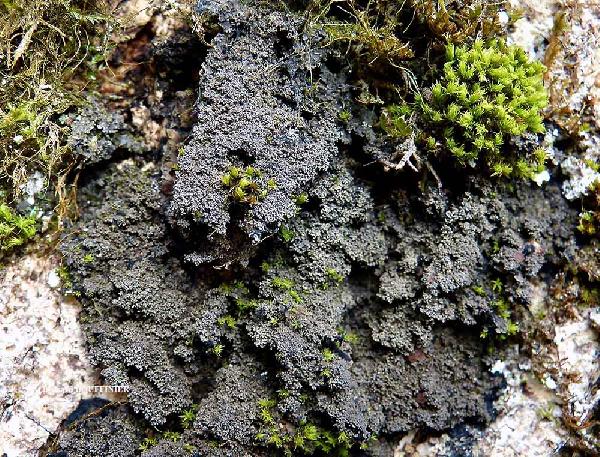
Bernard Bouffinier - Source: http://www.lichensmaritimes.org/index.php?task=fiche&lichen=688&lang=en
France, Forêt du Cranou
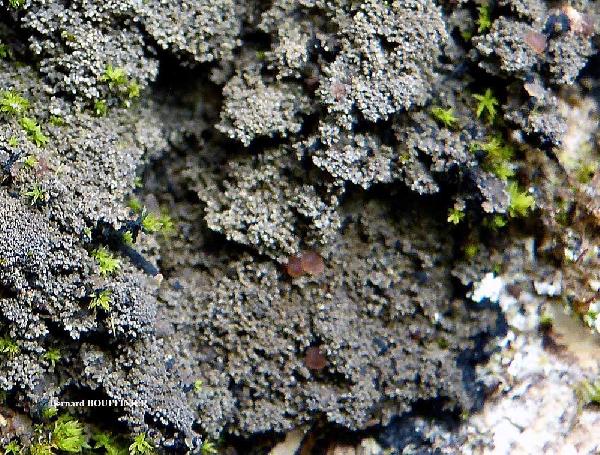
Bernard Bouffinier - Source: http://www.lichensmaritimes.org/index.php?task=fiche&lichen=688&lang=en
France, Forêt du Cranou
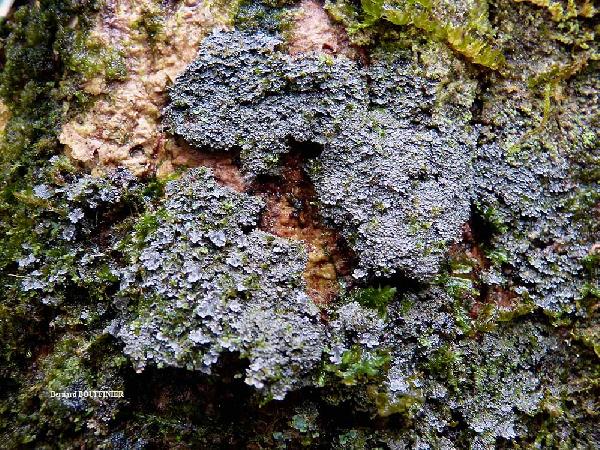
Bernard Bouffinier - Source: http://www.lichensmaritimes.org/index.php?task=fiche&lichen=688&lang=en
France, Forêt du Cranou
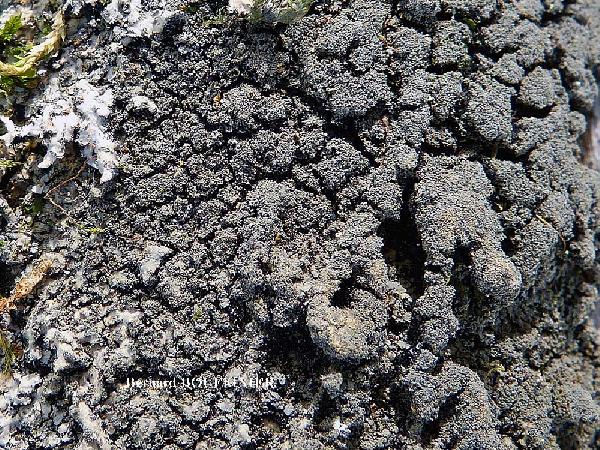
Bernard Bouffinier - Source: http://www.lichensmaritimes.org/index.php?task=fiche&lichen=688&lang=en
France, ForêSource de la Bidouze, Pays Basque
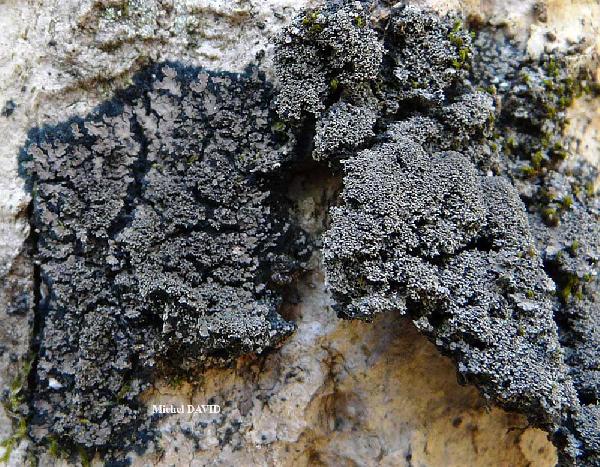
Michel David - Source: http://www.lichensmaritimes.org/index.php?task=fiche&lichen=688&lang=en
France, Forêt du Cranou

Ulrich Kirschbaum CC BY-SA 4.0 - Source: https://www.thm.de/lse/ulrich-kirschbaum/flechtenbilder
Austria: Alps.
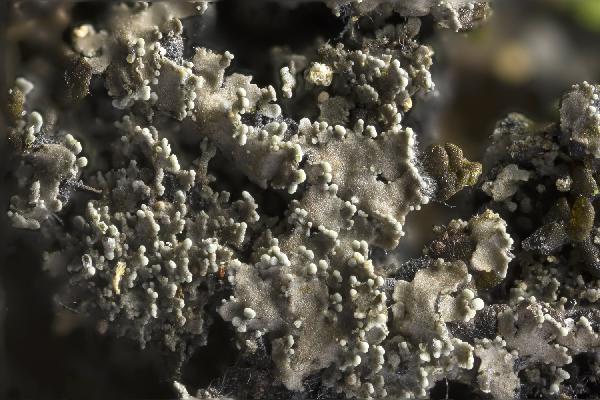
Ulrich Kirschbaum CC BY-SA 4.0 - Source: https://www.thm.de/lse/ulrich-kirschbaum/flechtenbilder
Austria: Alps.
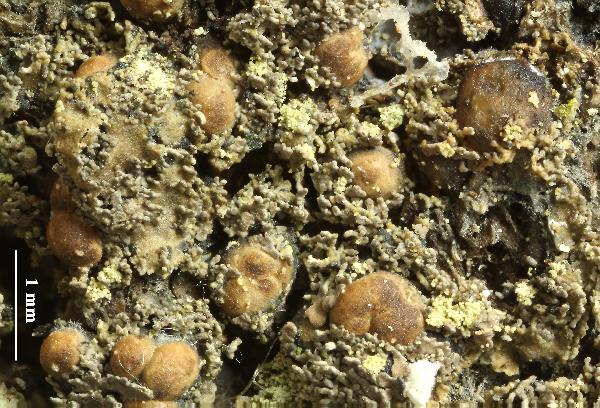

Felix Schumm - CC BY-SA 4.0
[20928], Austria, Salzburg, Eastern Alps, Berchtesgaden Alps, Pongauregion,
Hagengebirge, 10.5 km NW of the centre of Bischofshofen,
valley-area of the brook Blühnbach, between Maxlehen and "Schloss
Blühnbach", 47°28'38'' N, 13°06'46'' E, 765 m, on Acer. Leg. R. Türk
(no 58088), 17.06.2017, det R. Türk. Ex: LICHENOTHECA GRAECENSIS
NR. 466
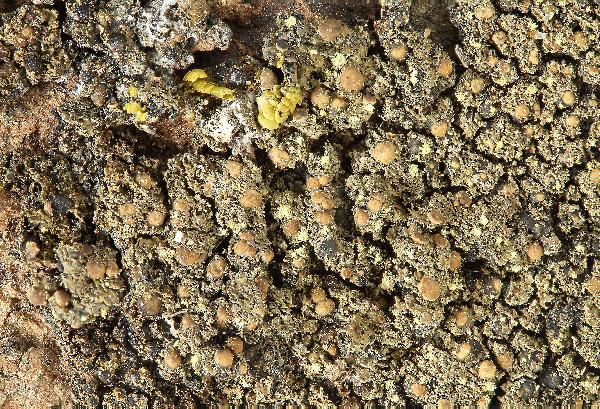

Felix Schumm - CC BY-SA 4.0
[20928], Austria, Salzburg, Eastern Alps, Berchtesgaden Alps, Pongauregion,
Hagengebirge, 10.5 km NW of the centre of Bischofshofen,
valley-area of the brook Blühnbach, between Maxlehen and "Schloss
Blühnbach", 47°28'38'' N, 13°06'46'' E, 765 m, on Acer. Leg. R. Türk
(no 58088), 17.06.2017, det R. Türk. Ex: LICHENOTHECA GRAECENSIS
NR. 466
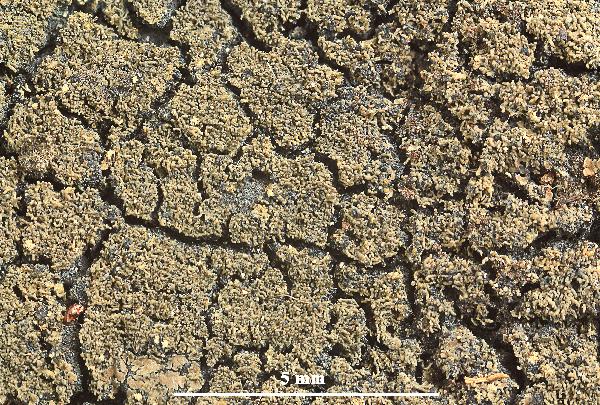

Felix Schumm - CC BY-SA 4.0
[3077], Österreich, östlich von Biberwier, westlich des Wampezer
Schrofens, 1350 m, an Bergahorn. Leg. F. Schumm & H.-J. Wolf,
22.09.1985, det. F. Schumm.
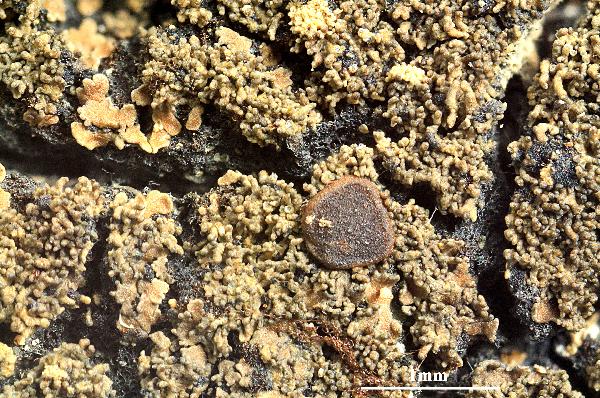

Felix Schumm - CC BY-SA 4.0
[3077], Österreich, östlich von Biberwier, westlich des Wampezer
Schrofens, 1350 m, an Bergahorn. Leg. F. Schumm & H.-J. Wolf,
22.09.1985, det. F. Schumm.
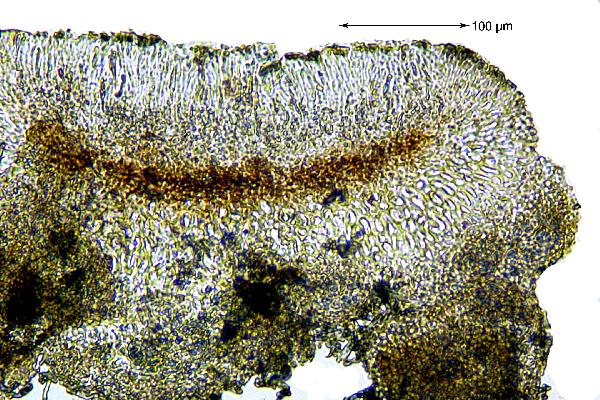

Felix Schumm - CC BY-SA 4.0
[3077], Österreich, östlich von Biberwier, westlich des Wampezer
Schrofens, 1350 m, an Bergahorn. Leg. F. Schumm & H.-J. Wolf,
22.09.1985, det. F. Schumm.
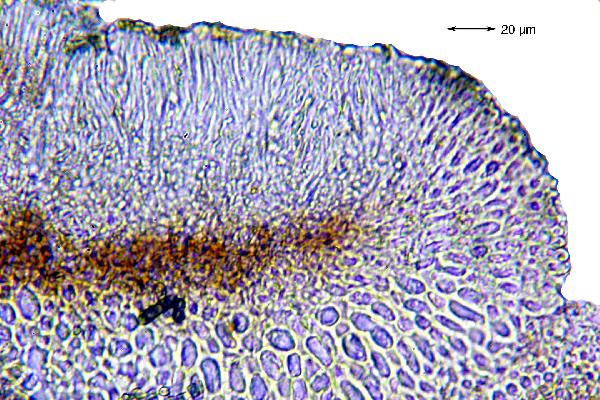

Felix Schumm - CC BY-SA 4.0
[3077], Österreich, östlich von Biberwier, westlich des Wampezer
Schrofens, 1350 m, an Bergahorn. Leg. F. Schumm & H.-J. Wolf,
22.09.1985, det. F. Schumm.
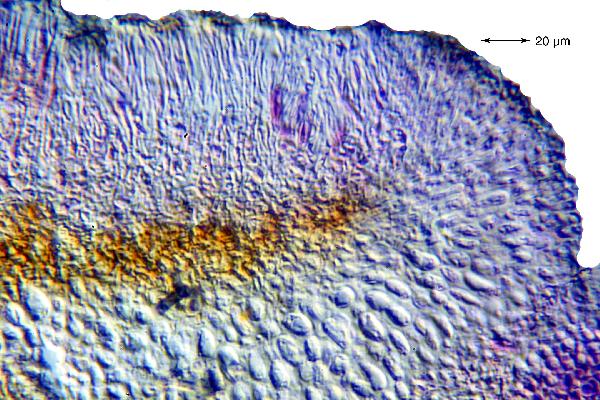

Felix Schumm - CC BY-SA 4.0
[3077], Österreich, östlich von Biberwier, westlich des Wampezer
Schrofens, 1350 m, an Bergahorn. Leg. F. Schumm & H.-J. Wolf,
22.09.1985, det. F. Schumm.
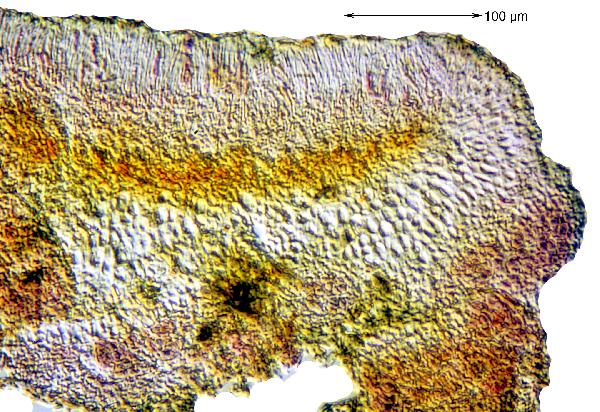

Felix Schumm - CC BY-SA 4.0
[3077], Österreich, östlich von Biberwier, westlich des Wampezer
Schrofens, 1350 m, an Bergahorn. Leg. F. Schumm & H.-J. Wolf,
22.09.1985, det. F. Schumm.


Felix Schumm - CC BY-SA 4.0
[3077], Österreich, östlich von Biberwier, westlich des Wampezer
Schrofens, 1350 m, an Bergahorn. Leg. F. Schumm & H.-J. Wolf,
22.09.1985, det. F. Schumm.
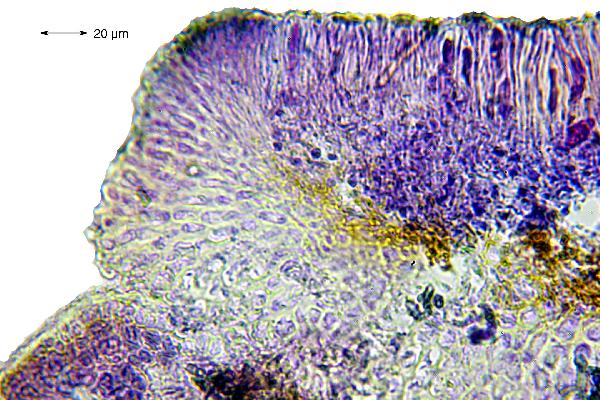

Felix Schumm - CC BY-SA 4.0
[3077], Österreich, östlich von Biberwier, westlich des Wampezer
Schrofens, 1350 m, an Bergahorn. Leg. F. Schumm & H.-J. Wolf,
22.09.1985, det. F. Schumm.
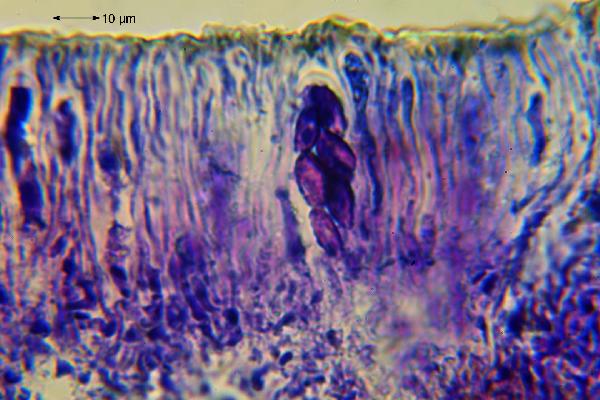

Felix Schumm - CC BY-SA 4.0
[3077], Österreich, östlich von Biberwier, westlich des Wampezer
Schrofens, 1350 m, an Bergahorn. Leg. F. Schumm & H.-J. Wolf,
22.09.1985, det. F. Schumm.


Felix Schumm - CC BY-SA 4.0
[3077], Österreich, östlich von Biberwier, westlich des Wampezer
Schrofens, 1350 m, an Bergahorn. Leg. F. Schumm & H.-J. Wolf,
22.09.1985, det. F. Schumm.
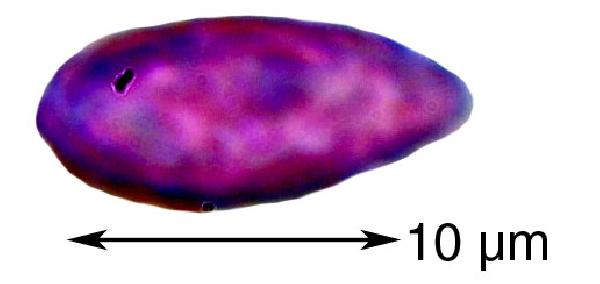

Felix Schumm - CC BY-SA 4.0
[3077], Österreich, östlich von Biberwier, westlich des Wampezer
Schrofens, 1350 m, an Bergahorn. Leg. F. Schumm & H.-J. Wolf,
22.09.1985, det. F. Schumm.
Growth form: Crustose
Substrata: bark and rocks
Photobiont: cyanobacteria, filamentous (e.g. Nostoc, Scytonema)
Reproductive strategy: mainly asexual, by isidia, or isidia-like structures (e.g. schizidia)
Most common in areas with a humid-warm climate (e.g. most of Tyrrenian Italy)
Commonnes-rarity: (info)
Alpine belt: extremely rare
Subalpine belt: very rare
Oromediterranean belt: absent
Montane belt: very rare
Submediterranean belt: extremely rare
Padanian area: absent
Humid submediterranean belt: very rare
Humid mediterranean belt: extremely rare
Dry mediterranean belt: absent

Predictive model
| Herbarium samples |


Felix Schumm – CC BY-SA 4.0
Image from: F. Schumm (2008) - Flechten Madeiras, der Kanaren und Azoren. Beck, OHG - ISBN: 978-3-00-023700-3


P.L. Nimis; Owner: Department of Life Sciences, University of Trieste
Herbarium: TSB (9116)
2001/12/13


P.L. Nimis; Owner: Department of Life Sciences, University of Trieste
Herbarium: TSB (16053)
2001/12/13

Photo by Maria Zardini, Museo di Storia Naturale di Venezia CC BY-SA 4.0
Ad cort. Castanearum in collibus circa Farra in prov. Vicetina.
Trevisan Lichenotheca Veneta 99 as Trachyderma triptophyllum

Courtesy Danièle et Olivier Gonnet - Source: https://www.afl-lichenologie.fr/Photos_AFL/Photos_AFL_P/Text_P_3/Parmeliella_triptophylla.htm
France, 20/9/2015 - Bois barbu - Villard-de-Lans - Isère

Courtesy Danièle et Olivier Gonnet - Source: https://www.afl-lichenologie.fr/Photos_AFL/Photos_AFL_P/Text_P_3/Parmeliella_triptophylla.htm
France, 20/9/2015 - Bois barbu - Villard-de-Lans - Isère

Courtesy Danièle et Olivier Gonnet - Source: https://www.afl-lichenologie.fr/Photos_AFL/Photos_AFL_P/Text_P_3/Parmeliella_triptophylla.htm
France, 20/9/2015 - Bois barbu - Villard-de-Lans - Isère

Courtesy Danièle et Olivier Gonnet - Source: https://www.afl-lichenologie.fr/Photos_AFL/Photos_AFL_P/Text_P_3/Parmeliella_triptophylla.htm
France, 20/9/2015 - Bois barbu - Villard-de-Lans - Isère

Courtesy Danièle et Olivier Gonnet - Source: https://www.afl-lichenologie.fr/Photos_AFL/Photos_AFL_P/Text_P_3/Parmeliella_triptophylla.htm
France, 20/9/2015 - Bois barbu - Villard-de-Lans - Isère

Bernard Bouffinier - Source: http://www.lichensmaritimes.org/index.php?task=fiche&lichen=688&lang=en
France, Forêt du Cranou

Bernard Bouffinier - Source: http://www.lichensmaritimes.org/index.php?task=fiche&lichen=688&lang=en
France, Forêt du Cranou

Bernard Bouffinier - Source: http://www.lichensmaritimes.org/index.php?task=fiche&lichen=688&lang=en
France, Forêt du Cranou

Bernard Bouffinier - Source: http://www.lichensmaritimes.org/index.php?task=fiche&lichen=688&lang=en
France, ForêSource de la Bidouze, Pays Basque

Michel David - Source: http://www.lichensmaritimes.org/index.php?task=fiche&lichen=688&lang=en
France, Forêt du Cranou

Ulrich Kirschbaum CC BY-SA 4.0 - Source: https://www.thm.de/lse/ulrich-kirschbaum/flechtenbilder
Austria: Alps.

Ulrich Kirschbaum CC BY-SA 4.0 - Source: https://www.thm.de/lse/ulrich-kirschbaum/flechtenbilder
Austria: Alps.


Felix Schumm - CC BY-SA 4.0
[20928], Austria, Salzburg, Eastern Alps, Berchtesgaden Alps, Pongauregion, Hagengebirge, 10.5 km NW of the centre of Bischofshofen, valley-area of the brook Blühnbach, between Maxlehen and "Schloss Blühnbach", 47°28'38'' N, 13°06'46'' E, 765 m, on Acer. Leg. R. Türk (no 58088), 17.06.2017, det R. Türk. Ex: LICHENOTHECA GRAECENSIS NR. 466


Felix Schumm - CC BY-SA 4.0
[20928], Austria, Salzburg, Eastern Alps, Berchtesgaden Alps, Pongauregion, Hagengebirge, 10.5 km NW of the centre of Bischofshofen, valley-area of the brook Blühnbach, between Maxlehen and "Schloss Blühnbach", 47°28'38'' N, 13°06'46'' E, 765 m, on Acer. Leg. R. Türk (no 58088), 17.06.2017, det R. Türk. Ex: LICHENOTHECA GRAECENSIS NR. 466


Felix Schumm - CC BY-SA 4.0
[3077], Österreich, östlich von Biberwier, westlich des Wampezer Schrofens, 1350 m, an Bergahorn. Leg. F. Schumm & H.-J. Wolf, 22.09.1985, det. F. Schumm.


Felix Schumm - CC BY-SA 4.0
[3077], Österreich, östlich von Biberwier, westlich des Wampezer Schrofens, 1350 m, an Bergahorn. Leg. F. Schumm & H.-J. Wolf, 22.09.1985, det. F. Schumm.


Felix Schumm - CC BY-SA 4.0
[3077], Österreich, östlich von Biberwier, westlich des Wampezer Schrofens, 1350 m, an Bergahorn. Leg. F. Schumm & H.-J. Wolf, 22.09.1985, det. F. Schumm.


Felix Schumm - CC BY-SA 4.0
[3077], Österreich, östlich von Biberwier, westlich des Wampezer Schrofens, 1350 m, an Bergahorn. Leg. F. Schumm & H.-J. Wolf, 22.09.1985, det. F. Schumm.


Felix Schumm - CC BY-SA 4.0
[3077], Österreich, östlich von Biberwier, westlich des Wampezer Schrofens, 1350 m, an Bergahorn. Leg. F. Schumm & H.-J. Wolf, 22.09.1985, det. F. Schumm.


Felix Schumm - CC BY-SA 4.0
[3077], Österreich, östlich von Biberwier, westlich des Wampezer Schrofens, 1350 m, an Bergahorn. Leg. F. Schumm & H.-J. Wolf, 22.09.1985, det. F. Schumm.


Felix Schumm - CC BY-SA 4.0
[3077], Österreich, östlich von Biberwier, westlich des Wampezer Schrofens, 1350 m, an Bergahorn. Leg. F. Schumm & H.-J. Wolf, 22.09.1985, det. F. Schumm.


Felix Schumm - CC BY-SA 4.0
[3077], Österreich, östlich von Biberwier, westlich des Wampezer Schrofens, 1350 m, an Bergahorn. Leg. F. Schumm & H.-J. Wolf, 22.09.1985, det. F. Schumm.


Felix Schumm - CC BY-SA 4.0
[3077], Österreich, östlich von Biberwier, westlich des Wampezer Schrofens, 1350 m, an Bergahorn. Leg. F. Schumm & H.-J. Wolf, 22.09.1985, det. F. Schumm.


Felix Schumm - CC BY-SA 4.0
[3077], Österreich, östlich von Biberwier, westlich des Wampezer Schrofens, 1350 m, an Bergahorn. Leg. F. Schumm & H.-J. Wolf, 22.09.1985, det. F. Schumm.


 INDEX FUNGORUM
INDEX FUNGORUM
 GBIF
GBIF
 DOLICHENS
DOLICHENS

